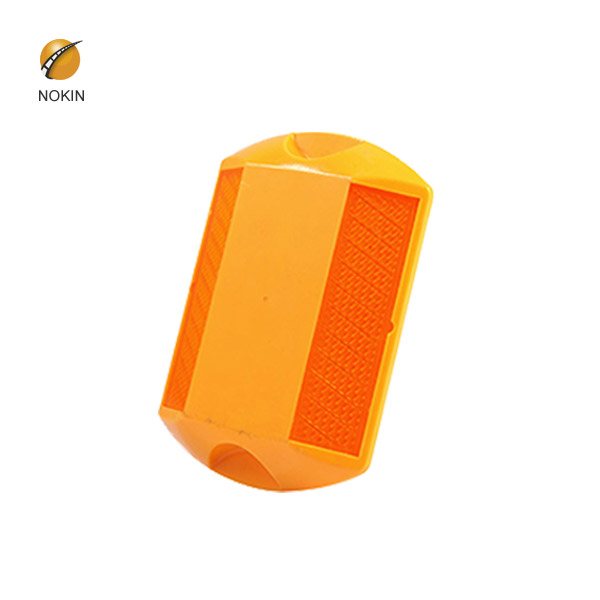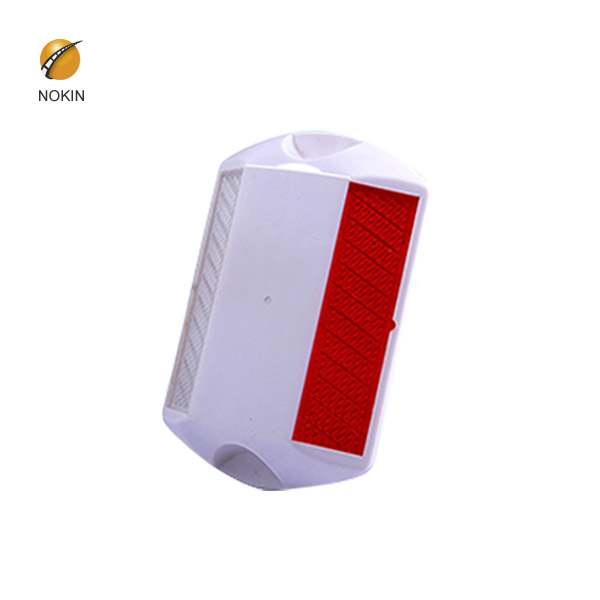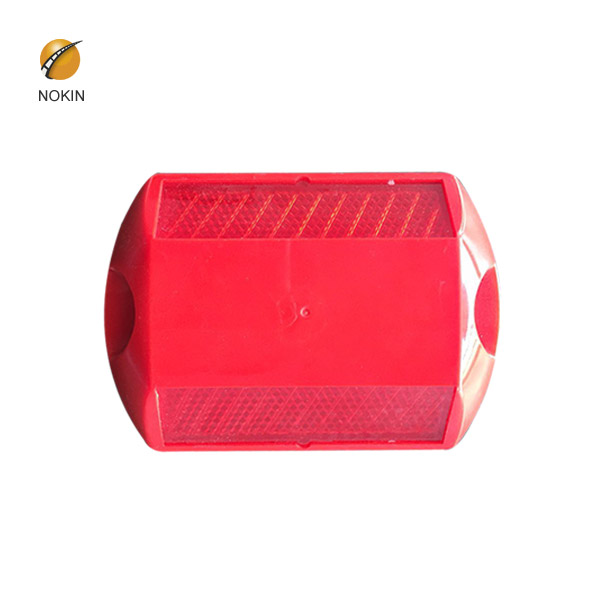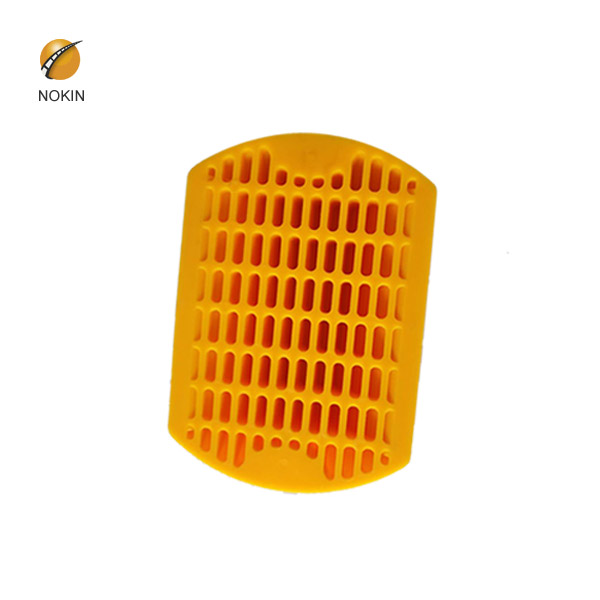



Reflective studs on motorway are safety devices used on roads. These devices are usually made of plastics, ceramics, thermoplastic coatings or occasionally metal, and come in a variety of shapes and colors. Reflective studs on motorway include lenses or reflective sheets, which enhance visibility by reflecting automobile headlights. Some other names for specific types of reflective studs include convex vibration lines, Botts' dots, contour lines, cat's eyes, road studs or road turtles. Sometimes they are simply referred to as "reflectors".
The specifications of Reflective studs on motorway:
| Body material | ABS |
| Size | 116*82*18mm |
| Lens Material | PMMA |
| Reflector type: | Double side/Single side |
| Color | Red, Yellow, Green, Blue, White |
| Packing | 50pcs/carton |
| Carton size | 38*36*23cm |
| Load capacity | 15Tons |

“stop” lines at road junctions controlled by either police or traffic lights. Reflecting road studs (often referred to as “cat’s eyes”) first came into use in 1934. By 1944, white lines were also being used to indicate traffic lanes and define the boundary of the main carriageway at entrances to side roads and lay-bys, and in
Nov 04, 2019 · Red marks the left edge of the road, amber marks the central reservation of a dual carriageway or motorway, green marks the edge of a layby or slip road, while green/yellow studs are used for
M9 motorway in Carlow, Ireland with cat’s eyes on the road surface and retroreflectors on barriers In almost all European countries, such markers will include reflective lenses of some kind. Most appear white or gray during daylight; the colors discussed here are the color of light they reflect.
or when lighting is not available. The studs on the left of the inside lane are reflective green for exiting the motorway at the proper exits on the left-hand side. The red reflective studs are
The routes nationales network, which is free and the equivalent of our A-roads, can be identified by the use of green road signs and the letter ‘N’. However, the system can be confusing, as an N road sometimes changes number and letter to become a ‘D’ road, which is why French drivers always follow a destination rather than sticking
International standards in reflective road studs. New Zealand conforms to the same standards as the UK and Australia on the positioning of road studs by using white studs to mark the centre line of a single carriageway, or to delineate lanes on a dual carriageway or motorway.
#46176780 – Stop road sign against blue sky and green field. Similar Images . Add to Likebox #45164469 – Dont walk New York traffic sign on blurred background
Byrne Malone Estate Agents are Proud to present 38 Greenmount Park, Green Road Newbridge to the market for sale by private treaty. Greenmount Park is a small mature residential development of semi-detached and detached homes situated in a most sought-after location on the Green Road within walking distance of the town centre and the Curragh plains.
Green cats eyes indicate where you rejoin the main carriageway of the motorway. They also indicate exits and entrances from slip roads. The colour you may see most often are white ones which are simply used to mark the lanes on the motorway. You will also come across two other colours – amber studs and red ones.
Nope, green is also used for “normal” motorways here in Denmark, the new one here in Herning are filled with green signs, although it’s not an “E” motorway. Blue signs only seems to appear at exits that doesn’t lead to another motorway. To sum up, normal motorway signs in Denmark are green.
These are often used in conjunction with two rows of the temporary cat’s eyes to divide traffic moving in opposite directions during motorway roadworks. Solar-powered cat’s eyes known as solar road studs and showing a red or amber LED to traffic, have been introduced on roads regarded as particularly dangerous at locations throughout the world.
This marks the start or finish of any particular road scheme. The arrow and zig-zag markings at top right show where the zig-zag lines (on this occasion on either side of a zebra crossing) in the
Since mid-2013 you may have noticed that Google Maps UK ceased to use the standard UK map road colours, for example, blue for a motorway and green for a dual carriageway. This is because different countries have different conventions for road type colours so where a map covers several countries confusion arose over the changing colours of equal
the Dartford Crossing and the wider motorway network, as well as running south to the Channel Tunnel and cross-Channel ferry ports. een Road Ash Lane umblefield Road London Road A20 S t a n s t ed L a n L n e ha H e t am Gre e L a b o ur-i n-V ai n R d. Pl a x d a l e This information does not constitute a contract or warranty. The dimensions
Yellow reflectors and white reflectors or “cat eyes” mean the same thing as the yellow and white lines on the road which is why they are so common. Blue means there is a fire hydrant parallel to the reflector, fairly common depending on where you